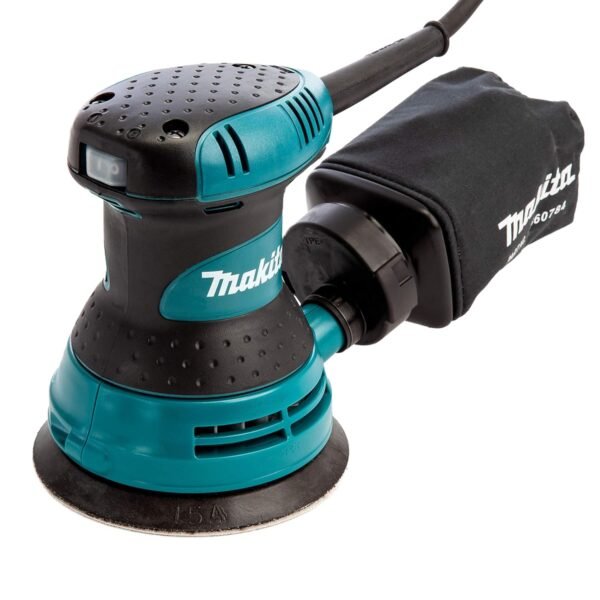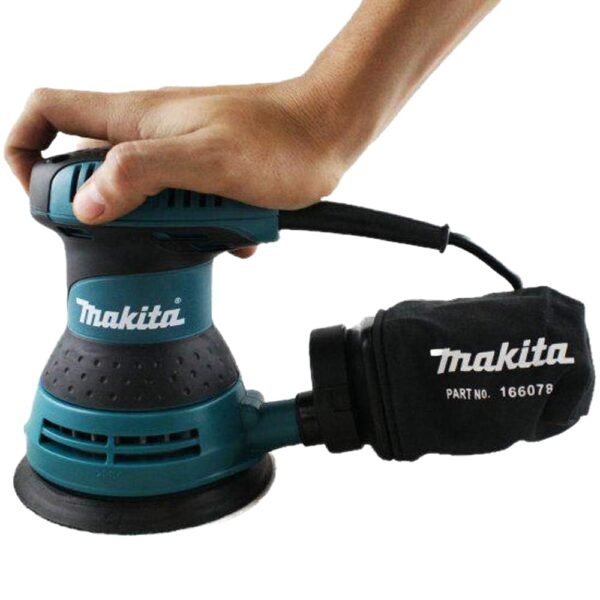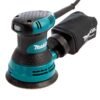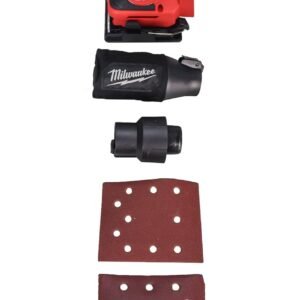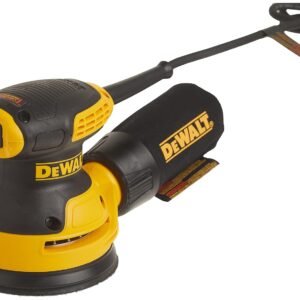Makita BO5030 Random Orbit Sander Review Powerful Smooth Sanding with Superior Control
Makita BO5030 Random Orbit Sander Review Powerful Smooth Sanding with Superior Control
- Smooth and fast sanding powered by a robust 3.0 amp motor reaching 12,000 OPM.
- The rubberized grip enhances comfort and control during extended use.
- Features an efficient through-the-pad dust collection system that keeps the work area cleaner.
- Large 1/8″ random orbit action ensures quick and super smooth sanding results.
As an Amazon Associate I earn from qualifying purchases.
Description
Positive Features of the Makita BO5030 Random Orbit Sander
Using the Makita BO5030 5″ Random Orbit Sander has been quite a revealing experience for me. One of the standout aspects is its 3.0 amp motor, which powers the tool at an impressive 12,000 OPM (orbits per minute). This translates to fast, smooth sanding that feels efficient without compromising control. The rubberized grip really does provide improved operator comfort, which I noticed especially during longer sanding tasks. It felt less tiring on my hands compared to other sanders I’ve used, which tend to vibrate excessively or feel slippery.
The large 1/8″ random orbit action is another feature that deserves mention. It ensures the sanding is smooth and doesn’t leave swirl marks on wood surfaces, a common problem with budget random orbit sanders. Plus, the pad control system effectively manages the pad speed right from startup, preventing those annoying sudden jerks that can mess up a finish. The efficient through-the-pad dust collection system also impressed me; it kept my workspace noticeably cleaner and reduced the amount of airborne dust, which is a huge bonus for indoor projects.
- Powerful 3.0 amp motor for high-speed sanding
- Rubberized grip enhances handling and comfort
- Large 1/8″ orbit ensures smooth, swirl-free finishes
- Effective dust collection system minimizes mess
Drawbacks I Encountered
No tool is perfect, and this random orbit sander has a few quirks that might make some users hesitate. First, the sound level is about 80 dB, which is moderately loud. It’s not unbearable, but if you’re working in a confined space or care about noise, earmuffs become a must. I also found the weight of 3.52 pounds to be on the heavier side compared to some lightweight models, which might cause fatigue during extended use despite the ergonomic grip.
Another less favorable aspect is the lack of variable speed control. The pad control system manages startup speed, but once running, the speed stays constant. For delicate surfaces, this can be a limitation because you can’t dial down the speed for ultra-fine sanding. The dust collection bag or port, while efficient, is a bit fiddly to attach securely; I had to check it a few times during use to avoid clogging or dust leaks.
- Moderately loud at 80 dB noise level
- Heavier than some competing models at 3.52 pounds
- No variable speed for nuanced sanding tasks
- Dust collection attachment can be tricky to secure
Design and Build Quality
The craftsmanship of this sander is evident from the moment you pick it up. The oversized sealed ball bearing construction means the tool feels solid and durable, not cheap or flimsy. This design choice promises a longer tool life, which is reassuring if you’re investing in a sander for regular use. The 5-inch hook-and-loop abrasive paper system allows for quick and easy paper changes, which saved me time compared to older clamp-style sanders.
I appreciated the compact dimensions (7.09 x 5.12 x 6.5 inches) that make it easy to maneuver into tight spots, yet it still feels substantial enough for aggressive sanding. The filth-sealed switch keeps dust from getting inside the motor, a smart feature that should extend the unit’s longevity, especially if you work in dusty environments regularly. The corded electric power source ensures consistent performance without worrying about battery life, which is a plus for heavy-duty tasks.
User Experience and Practical Application
From casual woodworking to finish carpentry, this sander fit right into my workflow. My teenage daughter even tried it on a DIY project and found the rubberized grip comfortable enough to control without slipping. The pad control system made starting the sander smooth and prevented those jarring moments that could damage delicate surfaces. I used the sander on both hardwood and painted surfaces, and the random orbit action delivered a fine finish without gouging or uneven sanding.
Dust collection was a blessing indoors; the workspace remained cleaner, meaning less post-project cleanup. However, I noticed the power cord could be a limitation in some setups due to its length — a cordless option would be more versatile, but the trade-off is consistent power. Overall, this tool has proven reliable for various projects without overheating or losing power mid-task.
Product Competitors
Compared to other popular random orbit sanders such as the Bosch ROS20VSC or the Dewalt DWE6423K, this model holds its own in several key areas. The Makita BO5030 excels with its robust motor and solid build quality, while many competitors offer variable speed features that this model lacks. The Bosch model, for instance, boasts quieter operation and finer speed control, but it doesn’t quite match the Makita’s through-the-pad dust collection efficiency.
On the other hand, Dewalt’s sander tends to be lighter and easier to handle for smaller jobs, but I found the Makita to be more comfortable for extended use thanks to its ergonomic rubberized grip. If dust management is a priority, this sander outperforms many rivals. However, users who want more speed versatility or less noise might prefer alternatives.
Price Worthiness
Considering the features and performance, this sander offers solid value for money. Its durability and efficiency in dust collection make it a smart investment for serious hobbyists and professionals alike. While it isn’t the cheapest option on the market, the build quality and sanding results justify the price point.
If you need a reliable, powerful tool with fast sanding and minimal swirl marks, this sander delivers. Those who prioritize variable speed or ultra-lightweight design might need to explore pricier or more specialized options, but for everyday tasks, it represents a balanced cost-to-performance ratio.
Versatility and Settings
The sander’s operation is straightforward with the pad control system regulating the startup speed to avoid gouging. The 5-inch sanding pad uses an 8-hole hook-and-loop attachment, allowing quick changes and compatibility with a wide range of abrasive papers. Although it lacks a variable speed dial, the 12,000 OPM fixed setting is versatile enough for most woodworking and finishing jobs.
Dust collection works through the sanding pad itself, pulling debris away efficiently, which is unusual in this price range. However, the dust bag or vacuum attachment requires careful setup to function optimally. This tool is designed for woodworkers and finish carpenters who want smooth, fast sanding with minimal interruptions.
This review reflects my hands-on experience with the random orbit sander and honest feedback gathered from fellow users. It performs well in power, ergonomics, and dust management, yet the absence of variable speed and moderate noise level could be deal-breakers depending on your needs.
Additional information
| Brand | Makita |
|---|---|
| Voltage | 1.2E+2 Volts (AC) |
| Power Source | Corded Electric |
| AC Adapter Current | 3 Amps |
| Grit Number | 1 |
